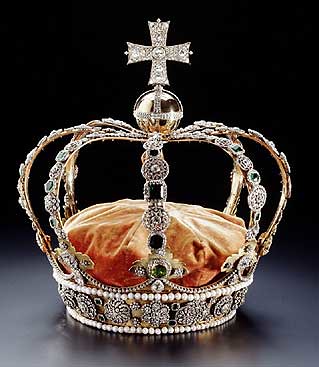 |
| Prince William and Mark Richards. |
The Duke of Cambridge has unveiled a statue in honour of the first man to identify Australia as a continent.
The Duke, who visited the Commonwealth of Australia with The Duchess of Cambridge and Prince George in April, said he was honoured to celebrate a man who "did far more than anyone to place Australia - quite literally - on the map".
Captain Matthew Flinders, the first person to circumnavigate Australia at the age of just 27, is a household name Down Under but little known in his native Britain.
 |
| The Duke with a table-top version of the statue of Captain Matthew Flinders. |
The government of South Australia hopes to bolster Captain Flinders' profile among British people by permanently erecting the statue at Euston station in central London, the site where it is believed Captain Flinders was buried on his death at the age of 40.
The statue shows him kneeling over a map of Australia with a compass and his companion Trim, a cat, who travelled with him on his explorations.
The Duke, who said Australia is a "very dear place to me and Catherine", was presented with a table-top version of the statue, which he was initially a little hesitant to lift. He described Captain Flinders as a man of "action,strength, and determination".
Bill Murrihead, the Agent General for South Australia, said: "Knowing that The Duke of Cambridge is so fond of Australia, we were delighted to have him here today to honour Matthew Flinders, a young, inspirational man like himself. I talked with him about his recent trip to Australia. He is very pro-all things Australian so we feel he is one of us."
He added that Captain Flinders was a "remarkable man who accomplished a huge deal" and deserved to be recognised in his homeland as he is in Australia.
 |
| At the beginning of his speech Prince William paid respect to the victime's of the Malaysian Airlines flight MH 17. |
A speech by HRH The Duke of Cambridge at Australia House
High Commissioner, Agent General, distinguished guests, Ladies and Gentlemen, thank you for your very warm welcome.
I know that I speak for all of us here when I acknowledge our deep sadness following yesterday's disaster in the Ukraine. For all of us who have lost fellow countrymen and women in the tragedy, words cannot do justice to our sense of loss. For Australians, and for our Malaysian brothers and sisters in the Commonwealth, the crash is a particularly cruel tragedy coming so soon after the loss of MH370. Please be assured of my family's thoughts and prayers at this time.
Earlier this year, you will know that Catherine and I had the great pleasure of spending time, with George, in Australia. In South Australia, we visited an organisation that will long live in our memory called the Northern Sound System. There, we met young people – some from very difficult backgrounds – who were turning their lives around through the power of music. The place was Australia at its very best: young, innovative, caring, cool … it was a truly uplifting place. Australia is a very dear country to me and Catherine, and so I am particularly honoured to have been invited today to celebrate a man who did far more than anyone to place Australia – quite literally – on the map. I am aware that this statue, and its eventual placement at Euston station, involved a lot of hard work by a committed group of supporters, but there are some who deserve a particular mention.
First, I should like to congratulate the sculptor, Mark Richards, for producing a beautiful statue and for telling the story of Captain Flinders with such elegance.
I should also like to acknowledge and thank the many people and organisations who have contributed financially to the project. Although backed by the Government of South Australia, this has been a privately funded initiative.
Finally, I should like to congratulate the Steering Committee for achieving so much. You have truly honoured the memory of Captain Flinders in London.
In closing, I would like to make two brief observations about the figure…I should say figures….not to forget Trim the cat, who apprently isn't bolted down.
First, I appreciate the way this work communicates Captain Flinders as a man of action, strength and determination.
Second, I very much appreciate the sensitivity of the inscription around the base of the statue.
Some of you may know that Matthew Flinders had an indigenous Australian on board HM Sloop Investigator…an indigenous Australian with whom he clearly had a close rapport. His name was Bungaree, a person Flinders described as “worthy and brave”. "Worthy and brave" is a description that is just as apt for Captain Flinders himself.
Thank you for inviting me to commemorate this great man with you all.
Thank you.




No comments:
Post a Comment